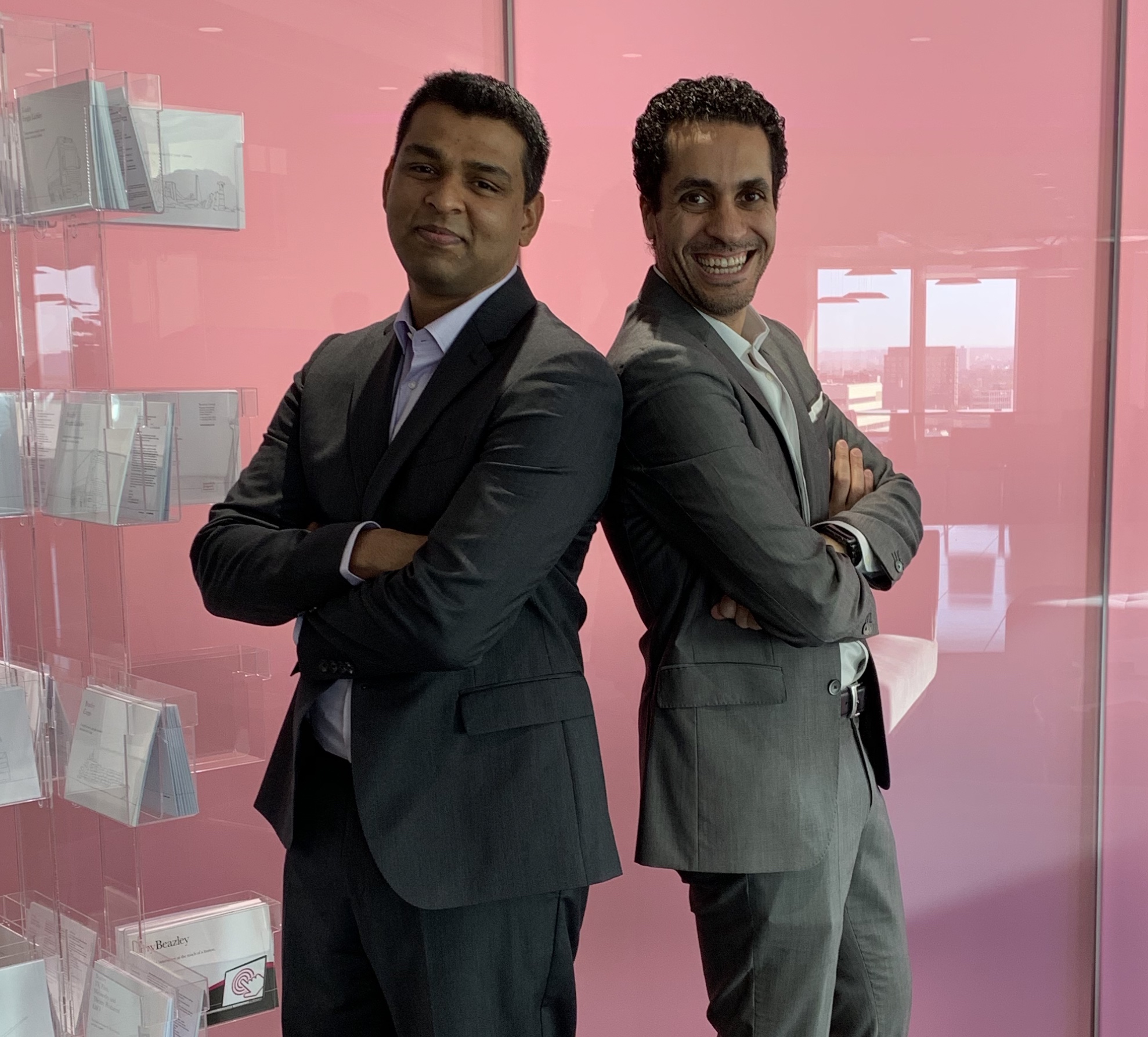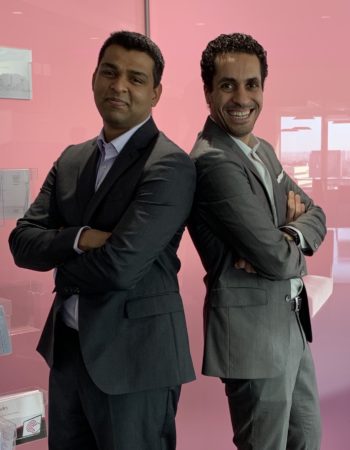
For this week’s episode, we spoke to Arun Narayanan, Head of Data and Analytics at Ed. This episode provides an excellent insight into the specialty insurance market at Lloyd’s and how blockchain based solutions can streamline processes, generate savings and promote product innovation.
Ed Broking is a global wholesale insurance broker which is headquartered in London with offices in China, Dubai, Germany, and the USA. Ed Broking provides clients with broking facilities for a wide-range of specialty business lines such as aerospace, marine cargo, construction and energy.
What is blockchain?
“Blockchain is a distributed ledger that sits on a peer-to-peer network where transactions are validated by every other member in the network.”
After providing a technical definition of blockchain, Arun proceeds to explain the benefits and features of blockchain:
- Blockchain can improve data sharing – Each transaction stored on the distributed ledger must be validated and these transactions are visible to all parties with requisite permissions. Thus, blockchain can enable data sharing between parties that may potentially have conflict of interests (for example, insurers and reinsurers.)
- Blockchains are secure – Cryptography (cryptographic hashes) ensure that transactions once stored on chain cannot be tampered with – this makes the information in the blockchain secure and verifiable.
- Blockchain can generate savings – There is a large amount of manual work done in the Lloyd’s market today (especially in the specialty business lines). Smart contractscan help automate some of these tasks to save time and money. At the same time, immutability and time-stamping in a blockchain provides a verifiable audit trail for regulatory or internal compliance processes, thereby generating even more savings.
Will blockchain disintermediate brokers?
At the start of this calendar year, there was a lot of discussion around the possibility that blockchain will disintermediate brokers entirely. However, over the past few months, this idea has been replaced by a notion that blockchain will enable brokers to focus on their core competencies – translating complex risks their clients face and bringing appropriate risks to the correct sources of capital (underwriters).
It goes without saying that automation may eat into some of the existing revenues of broker, but it is important to remember that blockchain, which may cause this revenue loss, will also reduce costs and create significant new product opportunities.
Brokers leading the charge in blockchain – is this counterintuitive?
Some examples of brokers playing an instrumental role in blockchain are:
- Marsh: In collaboration with IBM, ACORD and ISN, Marsh has launched a commercial Proof of Insurance solution on the IBM Hyperledger protocol. Extending this idea of proof of insurance, in October this year, Marsh collaborated with Evident to launch a blockchain based insurance verification solution for gig-economy workers.
- Willis Towers Watson (WTW): In May this year, WTW was part of the pilot for Insurwave – a commercial marine insurance blockchain solution which has report cost savings between 30% to 40%. Insurwave has been covered in detail in Episodes 12, 18 and 19.
Arun steps in to help us understand why all is not lost for brokers and attempts to explain the growing interest in blockchain amongst brokers.
“This (the emergence of blockchain) is a huge opportunity to improve the insurance value chain.”
Arun believes that the combination of IoT, Blockchain and AI has the potential to enhance the insurance value chain and potentially re-define the roles of some of the incumbents. He believes that brokers will not be disintermediated since brokers are trusted advisors for clients. Since Ed Broking focuses on specialty lines of insurance, there is even less chance of disintermediation.
How is business transacted today by brokers like Ed?
Specialty lines of insurance have contracts that are bespoke. Arun believes that before commenting on how blockchain can improve existing processes, it is important to shed light on what the current processes are:
Phase 1 – Client on-boarding / Analysis phase
This phase is about figuring out what the risk exposure is i.e. what kind of coverage would the client require. This phase involves a lot of manual work since there is little structured data to work with – there is still a lot of work that needs to be done with regards to data standards.
Phase 2 – Trading phase
This phase may be thought of as the risk placement phase – sort of market negotiation. The broker goes out to find parties willing to underwrite the risk – this could take place across multiple markets. A lead underwriter sets the price and follow-on underwriters subscribe to (sometimes fixed) percentages of the contracts.
The London Market Target Operating Model (LM TOM) is currently focusing on this phase of the process with the Placement Platform Limited (PPL) – this project is currently exceeding expectations; 29.6% of scope risks for Q3 2018 were placed through PPL!
Phase 3 – Accounting and settlement phase
This stage is concerned with the processing of transactions and settlement of claims which involve manual work – this is where smart contracts can generate savings through automation and the distributed ledger reduces cost by preventing duplication of effort and reconciliation.
According to Arun, it is essential to streamline the data flow issues in the client onboarding phase.
Opportunities presented by blockchain
According to Arun, Ed Broking follows a technology agnostic approach.
Blockchain offers some interesting opportunities for brokers such as Ed:
- Improve trade efficiency – A large portion of manual work done in the Lloyd’s market today could be automated and digitalized – this is precisely the focus of the PPL initiative. Reducing the possibility of human error and eliminating the need for data reconciliation are some of the ways blockchain can reduce friction in the insurance value chain.
- Improve customer satisfaction and customer service – cost and other benefits arising out of blockchain based solutions will translate to lower premiums for end customers and shorter periods for claim settlements.
- Product innovation – Blockchain could allow previously financially non-viable products (micro-insurance, on-demand insurance etc.) to be sold to customers by insurance intermediaries due to low overheads.
What approach has been taken by Ed Broking?
Ed Broking is currently not a part of B3i or the RiskBlock Alliance but is open to the idea of joining industry initiatives. Ed Broking is currently in the “educational stage” of their blockchain journey – the focus is on validating the business-use case and potential of blockchain. The aim is to determine the outcomes of such technology.
As Arun puts is, there is internal support from the senior management to explore blockchain. The key is to be able to facilitate integration – a company cannot let go of its legacy infrastructure overnight and the new technology must fully integrate into existing systems.
Arun believes that interoperability is key and that there will be multiple ecosystems in the future just as there are today. Interoperability between different protocols will ensure that in the future we don’t face the same problems arising due to data silos.
Role of IoT devices
IoT (Internet of Things) is beginning to play a major role in the insurance industry – in the Insurwave project, IoT devices are used to track containers, ships and other factors to provide accurate and real-time risk rating.
Arun elaborates that underwriting today is primarily based on static data sets and pricing is experienced based. As we move into a world where we can get real-time data from IoT devices, incumbents and InsurTechs can begin to offer on-demand insurance or micro-policies (think of Metromile which has launched on-demand motor insurance recently in the UK). Going back to an earlier point, Arun highlights that being able to price risks more accurately and provide new (personalized) products lets brokers serve existing (and new) customers better.
Another point briefly touched upon by Arun was the idea of parametric (or trigger-based) insurance products; these policies mark a move away from the traditional indemnity products offered by incumbents. Some incumbents such as Swiss Re already offer parametric insurance products for Nat Cat (natural catastrophe) events.
Closing remarks
Arun believes that blockchain will allow brokerage firms such as Ed Broking to improve customer satisfaction. In his opinion, the future of insurance lies in the combination of blockchain, AI and IoT. He re-iterates a sentiment that is shared by many – blockchain is a network solution and no single party can drive change; it must be an industry-wide effort.
Your turn!
Arun has provided some excellent insight into the specialty insurance marketplace and given us the broker’s perspective on blockchain.
If you liked this episode, please do review it on iTunes – your reviews make a huge difference. If you have any comments or suggestions on how we could improve, please don’t hesitate to add a comment below. If you’d like to ask Arun a question, feel free to add a comment below and we’ll get him over to our site to answer your questions.
Thank you, Arun!









